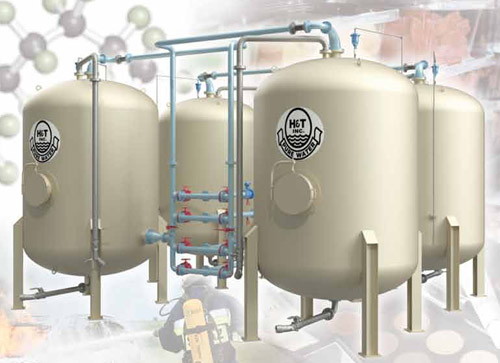Effective PFAS Waste Management in Agricultural Environments
Wiki Article
How PFAS Treatment Makes Certain Clean and Lasting Water
The presence of PFAS, typically understood as "permanently chemicals," positions considerable difficulties to water high quality and public health. The implications of these treatments prolong beyond immediate health benefits; they raise vital concerns concerning lasting water monitoring approaches that have to be resolved to make sure a durable future.
Understanding PFAS Contamination
PFAS, or per- and polyfluoroalkyl compounds, have actually emerged as a considerable ecological worry as a result of their widespread prevalence and persistence in the atmosphere. These synthetic chemicals have been used in different industrial applications and customer items, consisting of non-stick cooking equipment, waterproof clothing, and food packaging, due to their unique homes such as water and grease resistance.The contamination of soil and water sources by PFAS occurs primarily through commercial discharges, firefighting foam use, and seeping from garbage dumps. pfas management. Once released, these substances are resistant to degradation, bring about their buildup in the atmosphere. This determination raises critical issues, as PFAS can take a trip fars away through groundwater and surface water supply, influencing alcohol consumption water supplies and communities

Health Risks of PFAS
The persistence of PFAS in the setting raises substantial wellness worries for individuals revealed to these substances. Study has actually linked PFAS direct exposure to various negative wellness impacts, consisting of immune system dysfunction, liver damages, and enhanced threat of certain cancers cells.The ubiquity of PFAS in consumer items, such as non-stick pots and pans, water-repellent textiles, and food product packaging, more amplifies the danger of exposure. Consuming water polluted with PFAS is a significant issue, as these chemicals can seep into groundwater sources. Prone populaces, including kids and those living near industrial websites, might face increased dangers due to their creating systems and potential for higher direct exposure degrees.
As awareness of these health dangers proceeds to expand, regulatory agencies are starting to establish guidelines for PFAS levels in drinking water. Public wellness campaigns are vital to minimize direct exposure and protect communities from the long-lasting impacts of these harmful materials.

Ingenious Treatment Technologies
Exactly how can we effectively deal with the obstacles positioned by PFAS contamination in water resources? Innovative treatment modern technologies are becoming critical services in the mission for tidy water. These methods concentrate on the elimination or destruction of per- and polyfluoroalkyl compounds (PFAS), which are infamous for their persistence in the atmosphere.One encouraging method is adsorption utilizing innovative materials, such as activated carbon and ion exchange resins. These products have actually shown efficacy in catching PFAS particles from water. Another noteworthy innovation is membrane layer purification, which utilizes nanofiltration and reverse osmosis to separate pollutants at the molecular degree, therefore supplying an obstacle versus PFAS.
Additionally, advanced oxidation processes (AOPs) utilize strong oxidants to damage down PFAS substances right into safe results. This method is particularly efficient for dealing with extremely polluted water resources. Bioremediation methods, using certain microbes, are also being explored to degrade PFAS.
As research continues, hybrid systems that incorporate numerous technologies may offer enhanced performance, resolving the complexities of PFAS contamination. The growth and execution of these cutting-edge therapy innovations are vital steps towards making sure the security and sustainability of our water resources.
Benefits of Reliable PFAS Therapy
Efficiently treating PFAS contamination in water resources substantially enhances public wellness and environmental safety. PFAS, commonly referred to as "for life chemicals," are immune to degradation and can gather in the human body, resulting in serious wellness dangers such as cancer cells, liver damage, and body immune system dysfunction. By applying efficient therapy methods, areas can decrease direct exposure to these damaging substances, eventually improving the health and wellness outcomes of their populations.
In addition, successful PFAS therapy contributes to the preservation of local environments. Contaminated water can negatively affect water life and disrupt the delicate equilibrium of local environments. By ensuring clean water, therapy procedures safeguard biodiversity and keep ecological stability.
In addition, effective PFAS removal can cultivate public confidence in water top quality. When communities are guaranteed that their alcohol consumption water is devoid pfas waste management of dangerous impurities, it advertises a feeling of security and wellness. This trust fund is important for neighborhood involvement and assistance for recurring water monitoring initiatives.
Future of Water Sustainability
Amid growing issues regarding water top quality and deficiency, the future of water sustainability rests on innovative approaches and collaborative efforts. As communities face the looming threats of contaminants like PFAS, the development of advanced treatment technologies is essential. These technologies not only concentrate on the elimination of unsafe materials yet additionally advertise the reuse and recycling of water, thus decreasing overall demand.Moreover, reliable water administration plays a critical duty in making sure lasting practices. Policymakers must incorporate clinical research study with regulative frameworks to develop clear standards for water usage and therapy. Stakeholder involvement, including local areas and markets, promotes a sense of common obligation and encourages lasting methods across numerous markets.
Investment in infrastructure is also essential; updating aging systems to incorporate modern-day purification and purification methods can significantly boost water high quality. Furthermore, welcoming eco-friendly technologies, such as all-natural filtration systems, can offer green services.
Eventually, the future of water sustainability depends on an alternative approach that integrates modern technology, policy, and area involvement. By prioritizing these components, we can protect our water sources for generations ahead, guaranteeing tidy and lasting water for all.
Conclusion
In final thought, the efficient treatment of PFAS is vital for making certain tidy and lasting water. Eventually, robust PFAS treatment strategies contribute to lasting strength in water monitoring, cultivating public depend on in water high quality and promoting sustainable practices.Report this wiki page